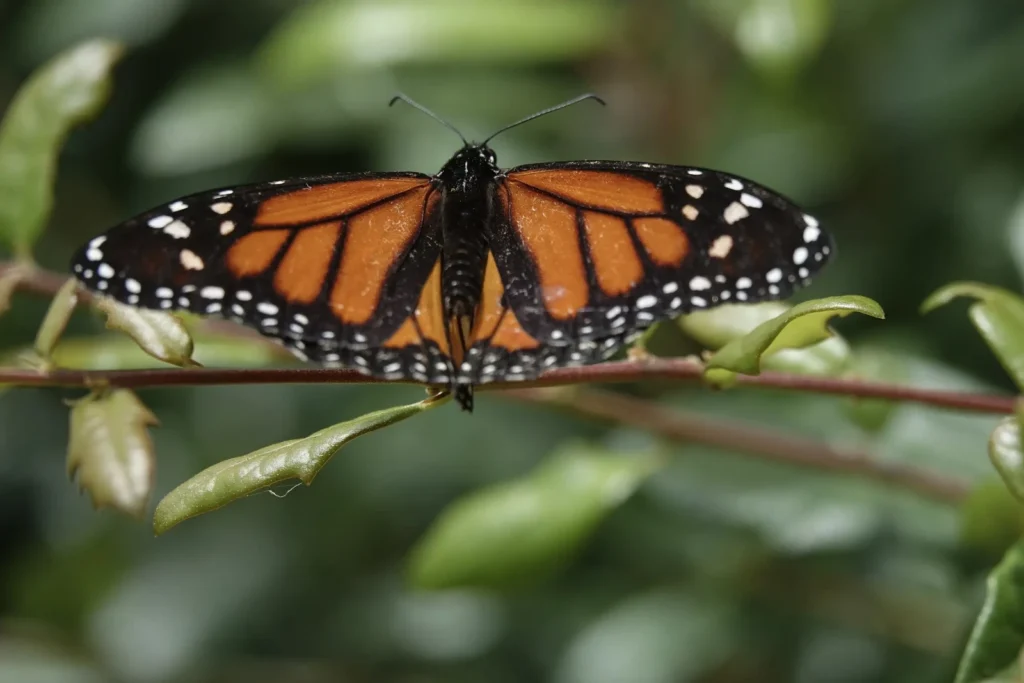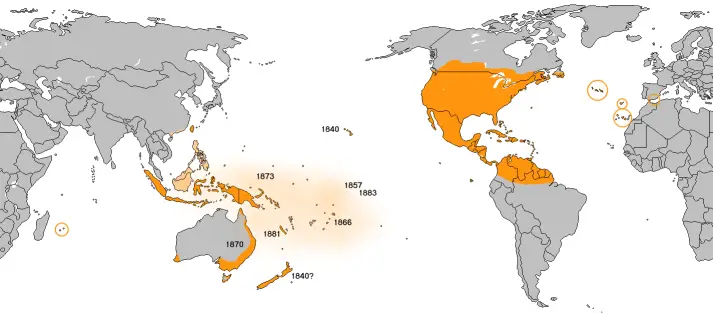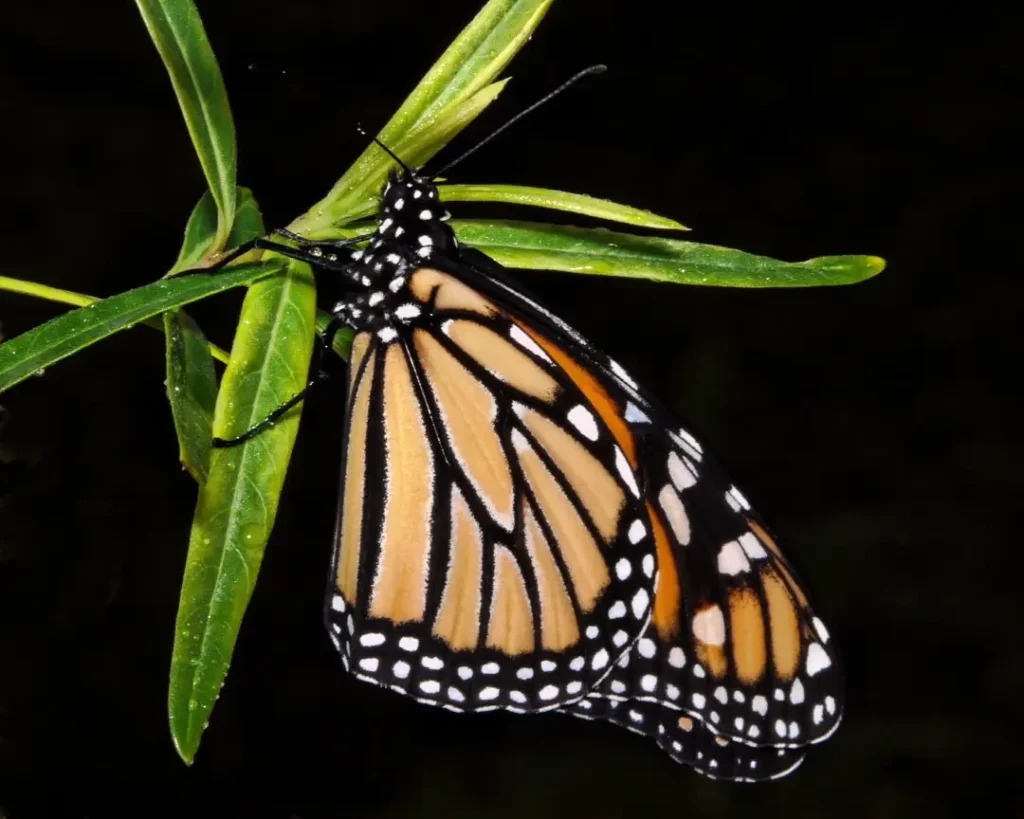Monarch (Danaus plexippus) — one of the most famous and colorful butterflies in the world. It is famous not only for its beauty, but also for the extremely long migrations it undertakes each year. The monarch has become a symbol of resilience, hope, and change in nature.

Classification
• The Kingdom: Animals (Animalia)
• Type: Arthropods (Arthropoda)
• Class: Insects (Insecta)
• Row: Luskokrili (Lepidoptera)
• Family: Nymphalidae
• Gender: Danaus
• View: Monarch (Danaus plexippus)
Appearance
📏 Sizes
• Wingspan: 8–10 cm
🎨 Description
• Bright orange wings with black veins and white spots along the edges
• Body black with white spots
• Males have dark spots (glands) on their hind wings

Range and habitat
🌍 Area
• North, Central and South America
• Also found in Australia, New Zealand, Spain and the Canary Islands
🌿 Living environment
• Meadows, roadsides, gardens, fields with spurges (Euphorbia), pastures
Behavior
🧭 Migrations
• Every year, monarchs make incredible migrations — up to 4,000 km
• In the fall, they fly from Canada and the USA to Mexico, where they winter.
• They return in the spring, reproducing along the way
🌞 Activity
• Active during the day
• Oriented by the position of the sun and the Earth's magnetic field

Life cycle
🦋 Stages of development
- Egg
- Caterpillar - feeds exclusively on milkweed, accumulating toxins
- Pupa - greenish with golden spots
- Butterfly - lives 2–6 weeks, migratory generations - up to 8 months
🌱 Features
• The caterpillar becomes brightly striped (yellow-white-black)
• Thanks to toxins from milkweed, it becomes inedible for predators
Significance and threats
📌 Value
• Pollinates plants
• Is an important link in ecosystems
• Serves as a symbol of environmental campaigns
⚠️ Threats
• Habitat destruction
• Use of herbicides (less milkweed means less food for the caterpillar)
• Climate change affects migration routes

Interesting facts
✔️ The monarch can travel over 100 km per day
✔️ Orients in flight thanks to an “internal compass”
✔️ The caterpillar consumes milkweed to become poisonous to birds
Conclusion
The monarch butterfly is an example of incredible endurance and perfection of nature. Its annual journeys are among the longest in the insect world. Protecting the monarch's habitat is not only about preserving the species, but also about caring for the natural balance on the planet.